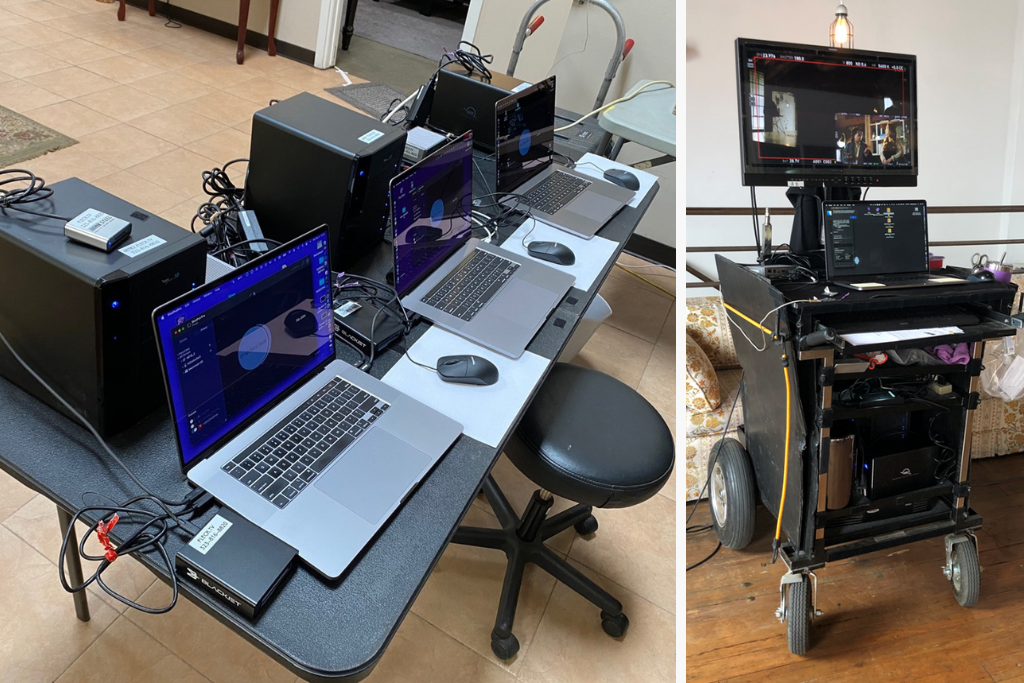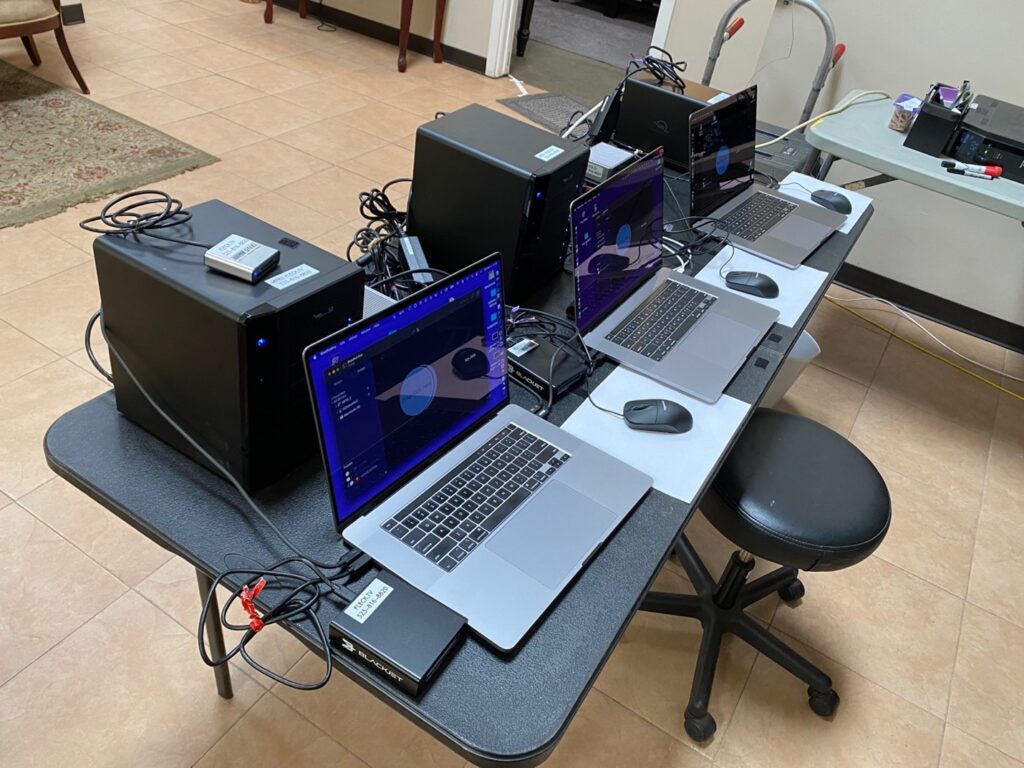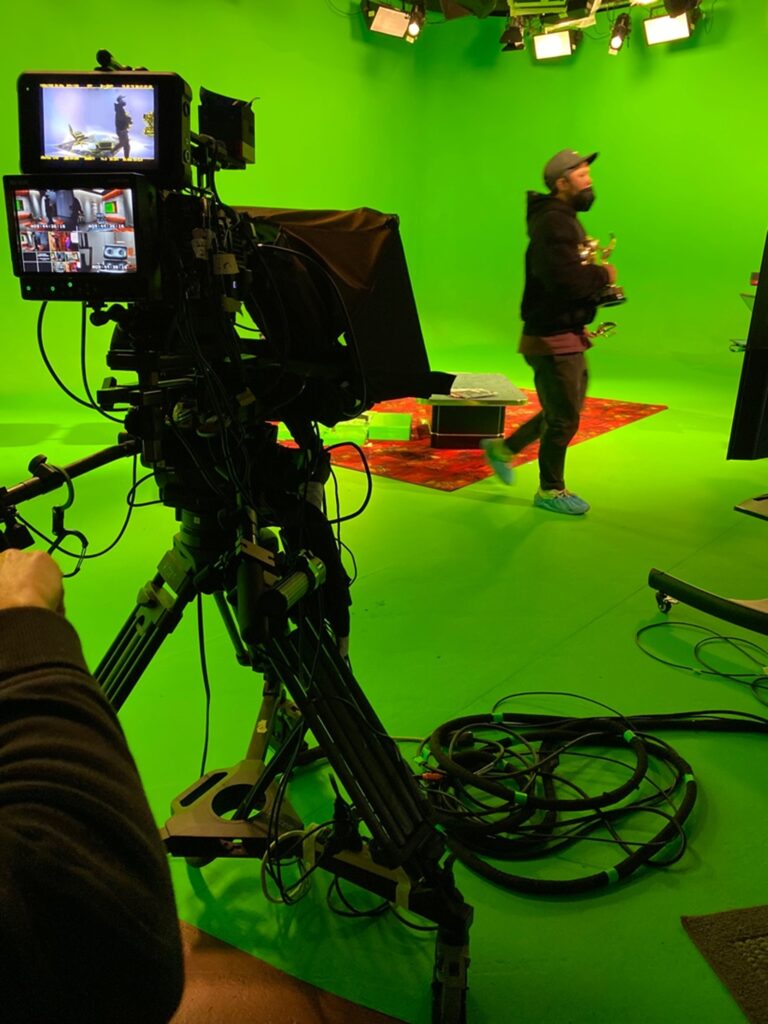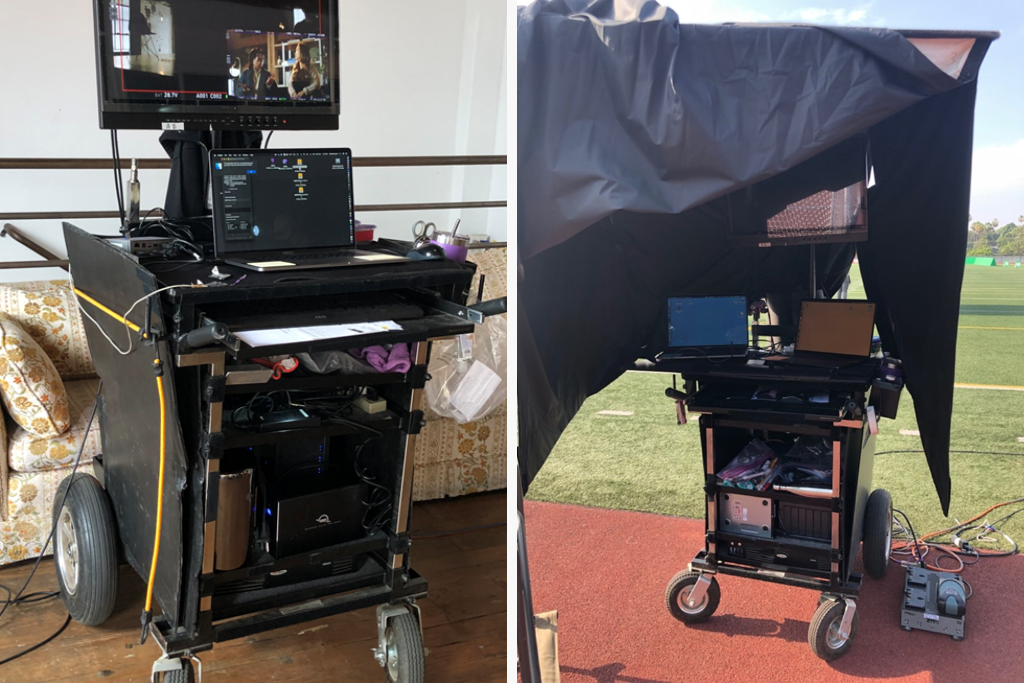
Hello and welcome! First of all, thank you so much for being here. Before we get into the specifics of your set-up, could you give us some background info on how you got your start and some of your past experiences in the industry?
My professional career started in post-production, where I spent several decades as an editor and then a post supervisor. In 2014 I started working in production, and the DIT who trained me used ShotPut, so I have used that program for my whole career as a DIT. Anyone with a post background is conscientious about detail, and I view the DIT’s job as partly to be responsible for getting perfect media sent to post — every day.
What types of productions do you usually work on? What are the main ways in which they differ from each other?
I started in narrative series, then feature films, commercials, music videos (27 hour days, anyone?), game shows, sports and other competition shows, cooking shows and music performance specials and concerts. For mid-range narrative shows, streaming series, commercials or features there are rarely more than three cameras, and takes are shorter – rarely over 10 minutes. On those shows one computer often is adequate to handle the media downloads. Fast destination drives and shuttles are necessary but slower data rates do not translate to disaster. That’s not always the case. Unscripted shows or competition shows routinely use six or more cameras that often do 90-minute takes. In addition, they are mostly shot in 4K, so the data quantities get high quickly. That requires quick turnaround speeds just to keep up.
Another trend is shows using the UnReal engine to generate virtual and AR backgrounds. On those shows, media and data accumulates four times as fast. How to deal with an onslaught of that data and turn it around quickly was a puzzle I have started to solve. More of my work is now on multi-cam shows with lots of data – up to 40+TB a day. My workflow has evolved into a multiple computer workstation download setup that speeds data turnaround. ShotPut is my go-to downloading program. My shift to big data also required organization and upgrades in some unusual areas besides parallel workstations – a big data show’s expendables include bankers’ boxes, Ziplock bags and rubber bands, just to help keep things organized. One last note: for any day over 20TB of data planned I recommend a second shift DIT, as human fatigue can lead to errors when a DIT works over 12 hours managing lots of cards.

And a follow-up question to that, do you have a favorite type of production to work on?
My favorite production is one that is well organized and where the tech is well thought out, especially in the smooth transition of data from production through to the post pipeline. Planning is essential to keep what’s being generated on set clearly organized – tidy data from the start helps the media files as they travel throughout the post process. Working with a pro camera team and a solid postproduction department is my dream.
Studio work is my favorite, though location work does have it’s pluses. My growing current interest is use of AR/UnReal engine backgrounds in studio production. The amazing imagination of those shows inspires me. Those productions are often economically and quickly shot in studio, and my detail-oriented mindset helps shows that continue to push at the boundaries of what’s creatively possible in real time.

Now everyone has different preferences and a different cart/workstation set-up, could you tell me about yours?
My workstations are modular, and producers like my a la carte model – it keeps budgets lower as expansion to multiple computers if needed is as simple as assembling them in a row. Starting at the power source, workstation AC power is run through a surge protector/UPC. My setup can be a couple folding tables with a row of computers. On smaller jobs or for mobility I can work with laptops on a cart.
Each workstation consists of a Mac Pro computer, a powered thunderbolt hub to increase connectivity, and cabling as needed to add readers and connect my onset back up hard drives. Producers can provide HDDs and shuttles, and/or I can provide part or all the storage for the production. Each show’s workflow is custom designed for the project and location. Data backups follow the 3-2-1 rule suggested by Netflix. Transcodes and QC are done using DaVinci Resolve. Downloading with ShotPut and DaVinci Resolve work simultaneously on each computer. Generally, for 4K single cam production I recommend a workstation for every four cameras, or if the production is generating AR backgrounds, no more than two cameras per workstation. AR workflow creates four times the amount of data since there is a composite, background, foreground and matte for each camera.

For those that may just be starting to build their cart/workstation, or are in the early stages of it, what are some pieces of equipment that you consider absolutely essential?
It is not possible to do the job without a suitable computer and a powered hub. Next purchase is a power conditioner/UPC. (On set power can be unpredictable and unreliable.) The first card reader I’d recommend is a CF/SIM card reader for audio. It only gets used once per show, but having that can simplify work after wrap, meaning the DIT can get the audio card(s) back to the mixer rapidly.
Essential programs are ShotPut and DaVinci Resolve, along with ParaShoot by Ben Hagen for “erasing” cards. TrueCheck is another data management essential. When downloading on a mobile cart, any jostle to the setup can unmount a card reader and error out the download. If the download has finished but the check sum was interrupted, TrueCheck can complete the checksums and create a report as if the download had not errored. It also allows for a quick check that downloaded files are all there on multiple drives, providing confidence that all files are where they should be. One other thing that’s great to have if budget allows is additional 4TB shuttle drives – on one or two day shoots sometimes producers forget or don’t bring shuttles or adequate storage, and a DIT having those on hand for purchase or rental can save the day.

Going along with the previous question, do you have any tips for beginners in the field? What’s something you wish you knew when you were first starting out?
• Never complain, never explain. (Henry Ford II)
• Do not take pictures of the set or talent.
• Keep an open mind.
• If you don’t like the craft service, bring your own food.
• Eat before the meal so downloading can commence during that break.
• Never fill destination drives over 85% full.
• Reboot every 4 hours whether the computer needs it or not. (If it doesn’t, it will.)
• Send a test clip to post before shooting starts.
• Do not take jobs if you don’t have the skills or equipment to do them, it leads to suffering and can hurt your reputation.
• Charge at least 1% of the cost of piece of equipment as a daily rental, and if the production can’t come up with that to rent your gear it is a big red flag for the job.
• Always see if it is possible to reload data cards an hour or so before wrap, so that there is not such a backlog when shooting stops.
• Test cards before shooting with them.
• Ask questions. If you don’t know something about the job, it can come back to bite you in the patootie.
What resources were most helpful to you when you were first starting out?
Find a mentor and shadow them to learn the basics.
Social media can be a great tool. When I was first starting as a DIT 10 years ago, I started a DIT Facebook group for tech questions I had. There are now 2600 DIT members from all over the world. If there is a tech question, often a skilled DIT has a quick answer. Members often report tech issues with equipment way before the problem is well known. The group is called DIT’s and Data Management for Features, TV and Commercials
Do you have any on-set stories you’d like to share?
After wrap is often when the real work begins for a DIT. Do not get annoyed at the 20th time someone asks when you will be done. Do a quick calculation as soon as possible after wrap about how long it will take to finish. Make sure to add 15 minutes beyond your end of the downloads so you have time to QC material, log and then box up the drives and/or shuttles. Then smile when you tell any questioner that time.
Is there last minute advice you would like to add?
Save your $$$. Put aside part of every paycheck. Buy equipment when the job will pay for it. Then, when you have a kit to rent, start a company, renting out your equipment through that company. The additional paperwork will save you money in the long run. Consult your tax advisor for details.
Thanks so much Jane, I know I learned a ton from your responses and I’m sure they will help others that are just starting out! Be sure and check back next week for another Data Expert Interview!